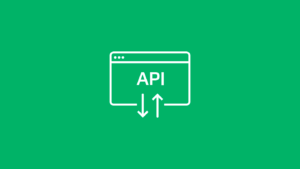IT automation trends inspiring forward-thinking leaders
Keeping pace with IT automation trends probably isn’t your first priority. But knowing what’s going on in your industry — and the world — can open new doors and ensure you stay competitive as the pace of technological change continues to accelerate.

Artificial intelligence, machine learning and real-time automation technologies are changing how IT teams operate, redefining digital transformation. From low-code platforms to generative AI, these trends impact every area of automation, offering tools and solutions that integrate into complex business operations.
As we explore the latest in IT automation, consider how these innovations can support your organization’s scalability, cut back on repetitive tasks and minimize downtime.
Trends shaping IT automation
From business process automation to robotic process automation (RPA), automation solutions are enabling IT teams to optimize processes across industries and functions, from healthcare to supply chain management.
As IT automation becomes increasingly integrated into business models, several trends are emerging that help organizations drive efficiency and maintain a competitive advantage.
- Artificial intelligence (AI) and the growing dominion of the algorithm
- Centralized visibility enabling real-time monitoring and greater control
- Cloud automation driving operational efficiency and agility
- DevOps pipeline automation facilitating faster service delivery
- Hyperautomation offering end-to-end connectivity
- Low-code/no-code and self-service solutions democratizing automation development
- Security automation providing peace of mind
- Service orchestration and automation platforms (SOAPs) advancing use cases
- Workload automation applying event-driven scheduling
Artificial intelligence and machine learning
AI and machine learning (ML) are advancing IT automation with intelligent decision-making capabilities that automate complex processes. By analyzing data in real time, AI and ML provide actionable insights and give teams the ability to respond more quickly to issues and improve overall performance. Algorithms designed for AI-driven automation software can analyze workflows to determine the most efficient paths.
The integration of natural language processing (NLP) and generative AI is also broadening the scope of automation. These technologies enable automation platforms to learn and adapt for long-term optimization of business operations.
Centralized automation management for greater control
Centralized automation platforms act as control centers for all IT and business processes. Overseeing and managing all processes from a single dashboard leads to better resource allocation and more efficient operations. Alerts, notifications and automated reports allow IT leaders to control multiple automation systems and address potential issues with little stress.
Not only is it faster and easier to deliver IT services with this visibility, but it’s possible to achieve the goals of each automation initiative with far less effort than it would take via siloed automation tools.
Cloud automation for scalability and flexibility
With cloud-based solutions, automation becomes scalable and adaptable, which makes it possible to meet changing demands without limiting infrastructure. Cloud automation is becoming more popular as it supports resource allocation based on real-time requirements.
A cloud automation platform is a flexible solution that integrates with other automation systems, including DevOps pipeline, service orchestration and monitoring tools.
Centralizing operations and optimizing workflows makes IT teams and technologies more responsive to business needs. This scalability is particularly valuable for organizations with fluctuating workloads and varied data requirements.
DevOps pipeline automation accelerating delivery
DevOps pipeline automation is showing up on a large scale as teams attempt to optimize the software development lifecycle to cut bottlenecks and improve delivery times. By automating CI/CD pipelines, IT teams can deploy software updates more frequently and efficiently to ensure that new features and patches are available as soon as possible.
Along with improving the customer experience, more streamlined DevOps pipelines can simplify IT operations. Improved collaboration between development and operations teams reduces manual interventions and drives faster deployment. Responding to customer needs quickly generates a strong competitive advantage in many industries.
Hyperautomation: Scaling across the enterprise
Hyperautomation — when automation extends across multiple systems and processes in one cohesive yet diverse environment — has become the goal for many enterprises. It makes use of AI, RPA and machine learning to automate every possible process, so organizations can scale their automation efforts efficiently. Hyperautomation also enhances interoperability to make it easy to deploy automation across various platforms and apps.
The outcomes? A major reduction in bottlenecks and a proportional increase in speed. Hyperautomation supports initiatives in all departments, which makes decision-making more straightforward in complex scenarios.
Low-code and no-code automation tools
Self-service automation is gaining traction as IT teams seek to empower individual departments with automation capabilities. By enabling departments to manage their own automation needs, self-service platforms increase operational efficiency and support business units in meeting their objectives.
Non-developers have gained the ability to create, modify and deploy workflows thanks to no-code and low-code automation tools with drag-and-drop interfaces. Business users can design and implement automation without extensive coding knowledge, which is particularly impactful for small to mid-sized organizations with limited IT resources.
Security automation protecting IT infrastructure
Security automation has become essential as organizations face increasing cybersecurity threats. By automating security processes, IT teams can respond to potential threats quickly to ensure their systems stay protected without manual intervention.
Automated security processes include monitoring for vulnerabilities, detecting unauthorized access and implementing protective measures across IT infrastructure.
This proactive approach helps organizations maintain compliance with industry standards and protects sensitive information. Security automation not only reduces risks but also supports IT operations by minimizing the need for manual monitoring.
Service orchestration and automation platforms (SOAPs)
SOAPs are gaining importance as organizations seek to manage complex workflows that span multiple applications and systems. These platforms provide a central interface for coordinating processes, allowing IT teams to optimize resources and improve productivity. By orchestrating automation across various systems, SOAPs help teams meet objectives more effectively and ensure that operations are aligned with business goals.
Service orchestration also allows organizations to remain agile in the face of evolving business requirements and is particularly beneficial for industries where efficient process management is key to maintaining competitiveness and meeting customer expectations.

Workload automation and intelligent job scheduling
By automating job scheduling based on real-time events, IT teams can maintain consistent productivity while lowering the risk of errors. Workload automation with intelligent job scheduling functionality provides constraint-based scheduling options that help teams meet service-level agreements (SLAs) and improve overall performance.
This trend allows organizations to improve operations using event-driven triggers such as file modifications, email events or data updates. Automated scheduling also helps maintain compliance and achieve more consistent results, supporting initiatives across an organization.
Modernize your IT automation
The automation market is advancing rapidly, and keeping up with the latest IT automation trends can make all the difference in achieving smarter, more efficient operations. From GenAI to intelligent automation, these innovations are reshaping how IT and operations professionals tackle complex challenges. Technologies like APIs, intelligent document processing (IDP) and chatbots are further enhancing these trends as automation becomes more accessible and impactful. At the same time, influential analysts like those at Gartner are driving the field forward with insights.
One of the fastest ways to modernize your IT operations is with a workload automation platform like ActiveBatch by Redwood. Your team will gain access to comprehensive automation capabilities to improve complex workflows and support digital transformation. With a low-code interface and an extensive library of pre-built connectors, ActiveBatch makes it easy to build effective end-to-end workflows that integrate easily across platforms. Its event-driven architecture supports advanced scheduling — constraint-based job automation triggered by file events, data modifications or email notifications.Consider how these advancements can support your organization’s goals and improve processes with new versatile use cases. Ready to see how intelligent automation can enhance your operations? Sign up for a demo and move into the future with confidence.







